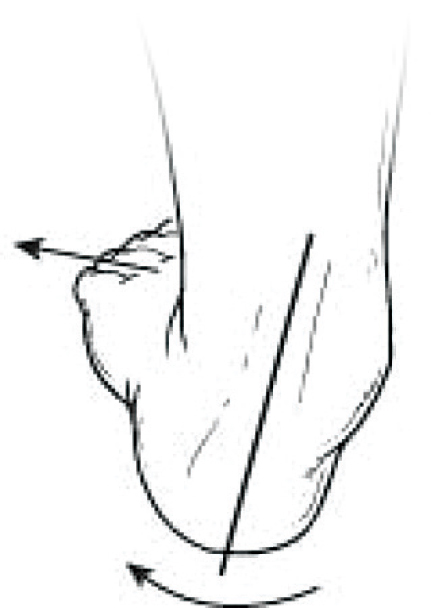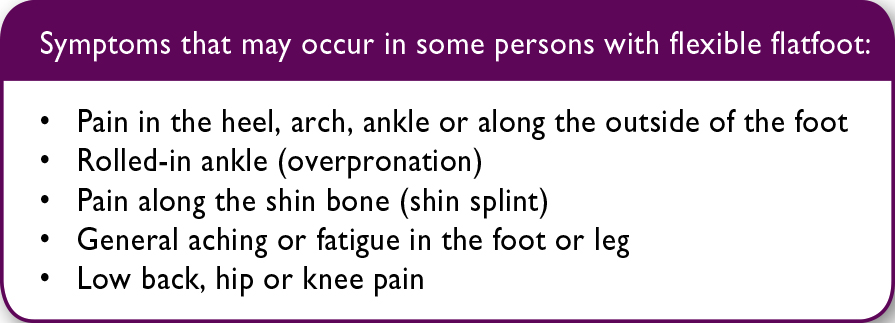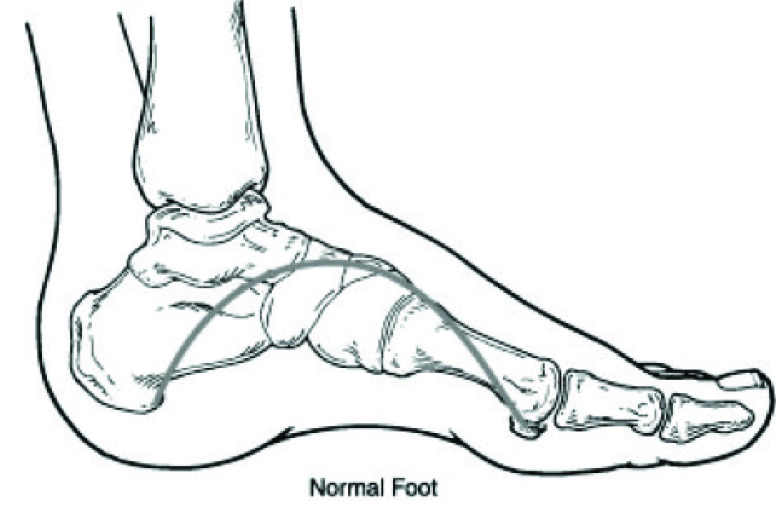Don’t Ignore
Flat Feet
Samuel Elsner, DPM
Podiatric Medicine
Foot & Ankle Clinic
Menomonie
 What Is Flatfoot?
What Is Flatfoot?
Flatfoot is often a complex disorder, with diverse symptoms and varying degrees of deformity and disability. There are several types of flatfoot, all of which have one characteristic in common: partial or total collapse (loss) of the arch. Other characteristics shared by most types of flatfoot include toe drift, in which the toes and front part of the foot point outward. The heel tilts toward the outside and the ankle appears to turn in. A tight Achilles tendon, which causes the heel to lift off the ground earlier when walking may make the problem worse. Bunions and hammertoes may develop as a result of a flatfoot.

Treatment and prevention of adult flatfoot can reduce the incidence of additional fozot problems such as bunions, hammertoes, arthritis and calluses, and improve a person’s overall health, according to research published in an issue of the Journal of Foot & Ankle Surgery.
 Overweight males in white-collar jobs are most apt to suffer from adult flatfoot disorder according to the research. FootHealthFacts.org, the consumer website of the American College of Foot and Ankle Surgeons, notes that symptoms of adult flatfoot include pain, swelling, flattening of the arch and an inward rolling of the ankle. But because flatfoot is a progressive disorder by nature, the study suggests that neglecting treatment or preventive care can lead to arthritis, loss of function of the foot and other painful foot disorders.
Overweight males in white-collar jobs are most apt to suffer from adult flatfoot disorder according to the research. FootHealthFacts.org, the consumer website of the American College of Foot and Ankle Surgeons, notes that symptoms of adult flatfoot include pain, swelling, flattening of the arch and an inward rolling of the ankle. But because flatfoot is a progressive disorder by nature, the study suggests that neglecting treatment or preventive care can lead to arthritis, loss of function of the foot and other painful foot disorders.
“Flatfoot disorder may gradually worsen to the point that many of the tendons and ligaments in the foot and ankle are simply overworking, often to the point where they tear and/or rupture,” says foot and ankle surgeon Sam Elsner, DPM, AACFAS.
In many cases, flatfoot can be treated with non-surgical approaches including orthotic devices or bracing, immobilization, physical therapy, medication and shoe modifications. “In some patients whose pain is not adequately relieved by conservative treatments, there are a variety of surgical techniques available to correct flatfoot and improve foot function,” Dr. Elsner added.
“As in most progressive foot disorders, early treatment for flatfoot disorder is also the patient’s best route for optimal success in controlling symptoms and additional damage to the feet,” continued Elsner. “The goal is to keep patients active, healthy, and as pain free
as possible.”
Nonsurgical Treatment
Dr. Elsner recommends nonsurgical treatment
options, including:
- Activity modifications. Cut down on activities that bring you pain and avoid prolonged walking and standing to give your arches a rest.
- Weight loss. If you are overweight, try to lose weight. Putting too much weight on your arches may aggravate your symptoms.
- Orthotic devices. Your foot and ankle surgeon can provide you with custom orthotic devices for your shoes to give more support to the arches.
- Immobilization. In some cases, it may be necessary to use a walking cast or to completely avoid weight-bearing.
- Medications. Nonsteroidal anti-inflammatory drugs (NSAIDs), such as ibuprofen, help reduce pain
and inflammation.
- Physical therapy. Ultrasound therapy or other physical therapy modalities may be used to provide temporary relief.
- Shoe modifications. Wearing shoes that support the arches is important for anyone who has flatfoot.
- Ankle Foot Orthotic (AFO) devices. Advanced bracing to modify your walking and to support your arches.
When Is Surgery Necessary?
In some patients whose pain is not adequately relieved by other treatments, surgery may be considered. Many surgical techniques are available to correct flexible flatfoot, and one or a combination of procedures may be required to relieve the symptoms and improve foot function. In selecting the procedure or combination of procedures for your particular case, Dr. Elsner will take into consideration the extent of your deformity based on the x-ray findings, your age, your activity level and other factors. The length of the recovery period will vary depending on the procedure or procedures performed.
Dr. Elsner specializes in all facets of forefoot, rearfoot, and ankle conditions. Surgical interests include reconstructions, trauma, and Charcot foot. He is also certified in four different total ankle replacement systems.
Samuel Elsner, DPM – Foot & Ankle Clinic
For information or to schedule an appointment:
715-235-4274 | footankle-clinic.com
Dr. Elsner sees patients in Eau Claire, Chippewa, Cumberland, Menomonie,
Rice Lake and Shell Lake.